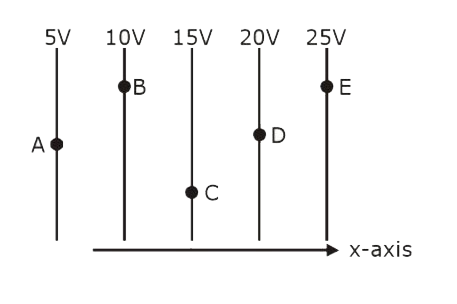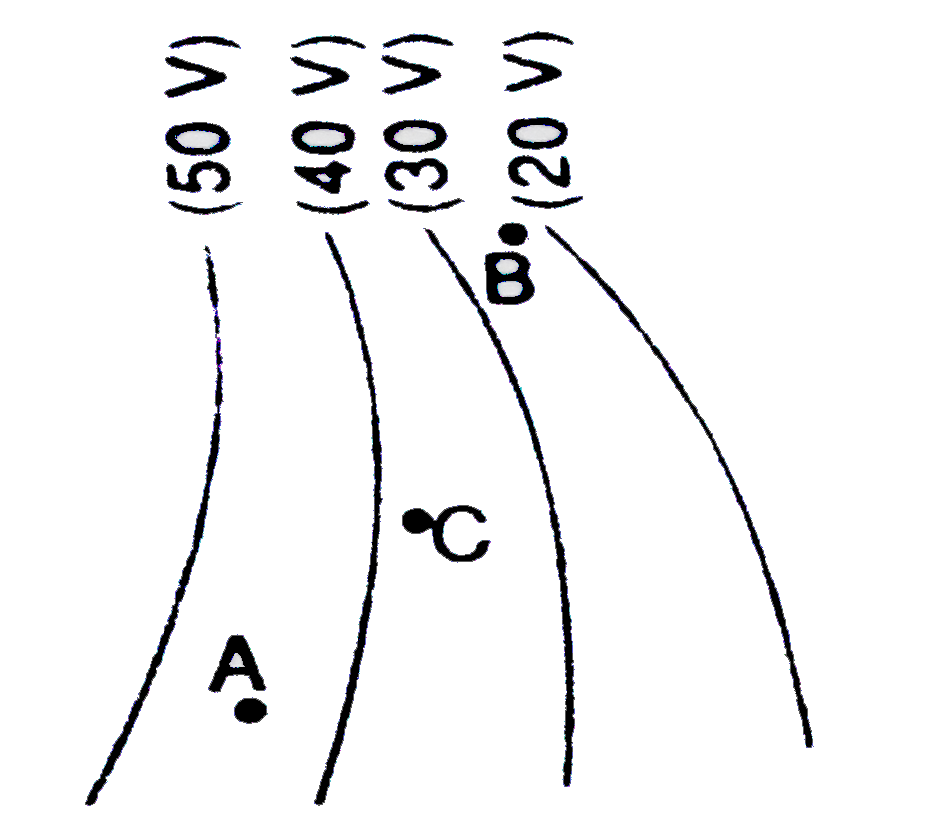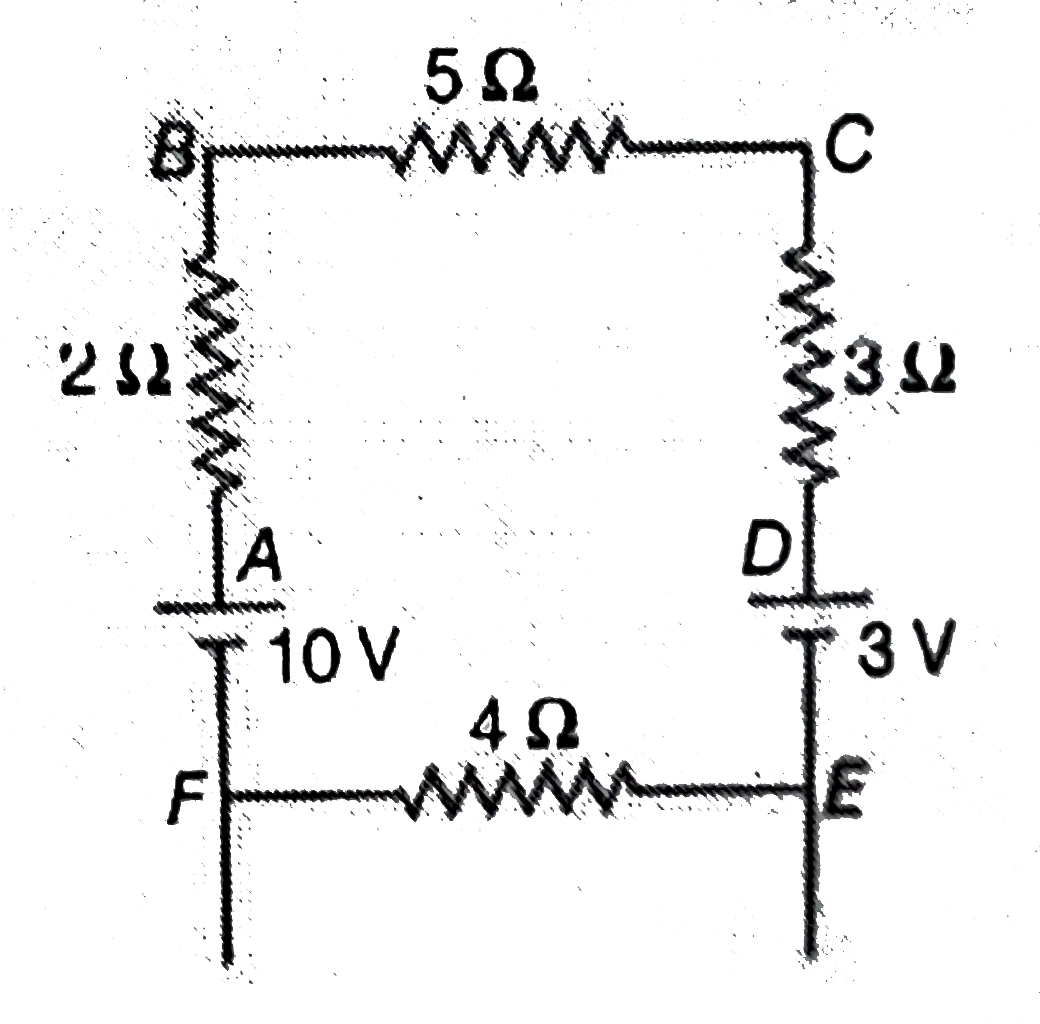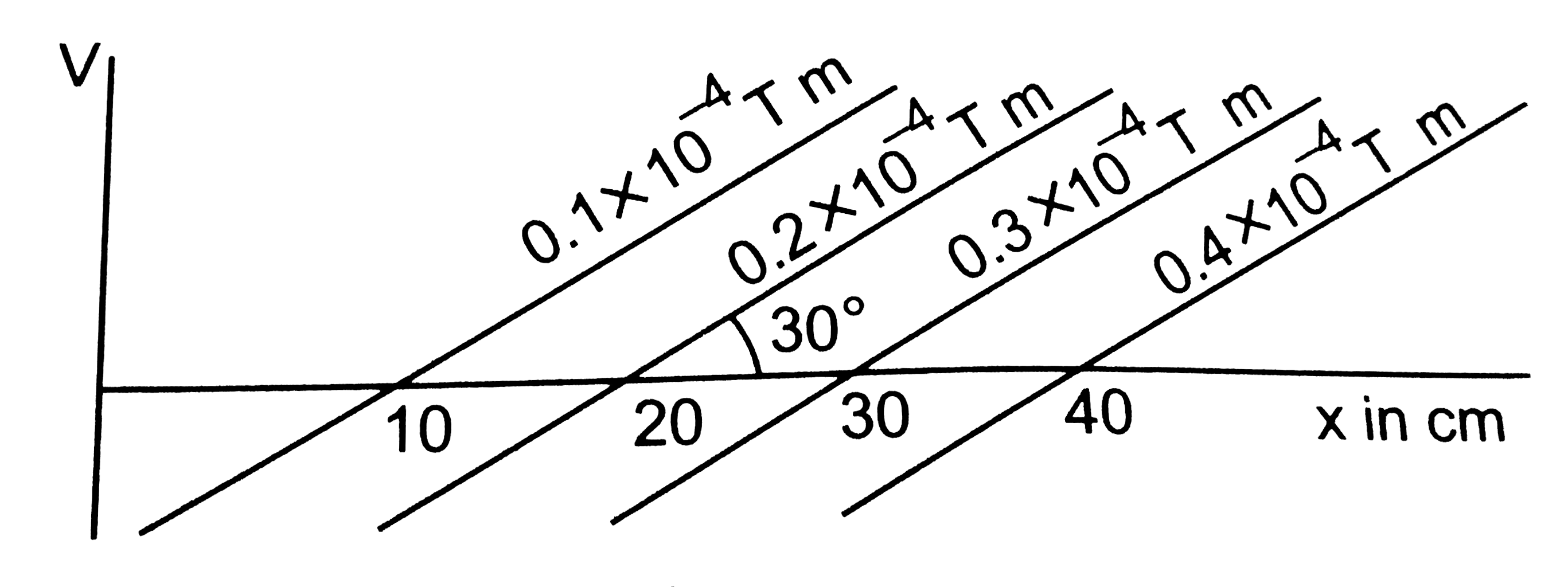Figure shows a set of equipotential surfaces. There are a few points marked on them. An electron is being moved from one point to other. Which of the following statements is/are correct?

The electric field is directed along + x-axis.
Work done by the electric field, in moving the electron form B to C, is positive.
Work done by the electric field, in moving the electron form C to D is same as from D to E.
As the electron moves from E to A, the potential energy increases.
The correct Answer is:B, C, D
Step by step video & image solution for Figure shows a set of equipotential surfaces. There are a few points marked on them. An electron is being moved from one point to other. Which of the following statements is/are correct? by Physics experts to help you in doubts & scoring excellent marks in Class 12 exams.
Updated on:21/07/2023Topper's Solved these Questions
- ELECTROSTATICS - I BOOK - MOTIONCHAPTER - ELECTROSTATICS - I EXERCISE - EXERCISE - 2 (Level -II) (Section F)
1 Videos
- ELECTROSTATICS - I BOOK - MOTIONCHAPTER - ELECTROSTATICS - I EXERCISE - EXERCISE - 3 (Level -I) (Section A)
7 Videos
- ELECTROSTATICS - I BOOK - MOTIONCHAPTER - ELECTROSTATICS - I EXERCISE - EXERCISE - 2 (Level -II) (Section D)
2 Videos
- ELECTROSTATICSBOOK - MOTIONCHAPTER - ELECTROSTATICSEXERCISE - Exercise -3 Section (B) Previous Year Problems | JEE Main
30 Videos
- ELECTROSTATICS-IIBOOK - MOTIONCHAPTER - ELECTROSTATICS-IIEXERCISE - Exercise - 4 (Level - II)
30 Videos
Similar Questions
Knowledge Check
If an object moves with constant velocity then which one of the following statements is NOT correct?
AIts motion is along a straight lineBIts speed changes with timeCIts acceleration is zeroDits displacement increases linearly with timeWith reference to a normal human being which one of the following statements is not correct?
AHuman saliva is slightly alkalineBAn adult human may secrete 1 to 1.5 liters of sliva per dayCSliva is secreted by six pairs of salivary gland in human beingsDThe salivary enzyme (ptyalin) breaks down cooked starch into maltoseWith reference to a normal human being which one of the following statement is not correct ?
ACompared with skeletal muscles, the tissues of intestine are much more affected by the shortage of oxygen.BIn the arterial blood, haemoglobin is normally 97% saturated with oxygen.CPulmonary artery contains deoxygenated blood.DAbout 70% of the carbon dioxide entering the erythrocytes react with the water to form carbonic acid.
Figure shows sone equipotential surfaces produce by some charges. At which point, the value of electric field is greatest ?

View SolutionWith reference to a normal human being, which one of the following statements is not correct?
View SolutionWhich of the following statements are correct in point defects in a crystal ?
View SolutionA point charge +Q is place just outside an imaginary hemispherical surface of radius R as shown in the figure. Which of the following statements is/are correct ?

View SolutionFor the circuit shown in figure. The point F is grounded. Which of the following is wrong statement ?

View Solution

